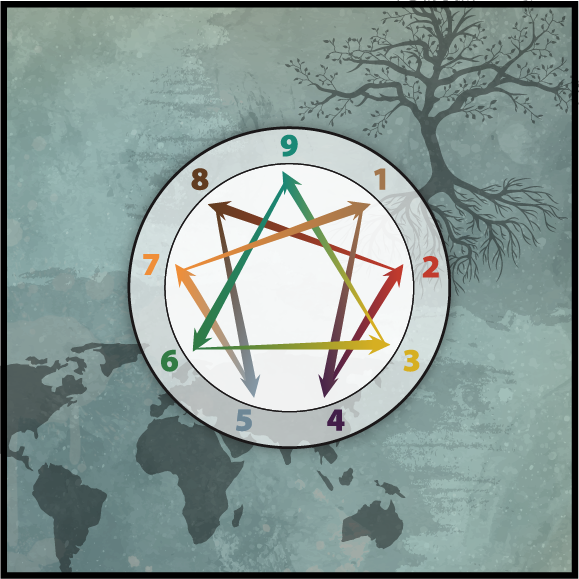 In discovering our Enneagram types, there can often be overlays on top of our core type, family overlays and culture overlays among them. Hopefully, this blog helps to clarify some of the confusion.
In discovering our Enneagram types, there can often be overlays on top of our core type, family overlays and culture overlays among them. Hopefully, this blog helps to clarify some of the confusion.
Family overlays
There are many overlay factors that can influence a person’s self-perception, as well as how they may appear on the outside in terms of behavior, appearance, and even their style of verbal or non-verbal behavior. Whether or not a family overlay is present depends on the degree to which an authority figure in the home had a pervasive influence on the family, not whether an authority figure of a certain type was present in the family. A dominant authority figure includes mothers, fathers, grandparents, and even older siblings. When this occurs, most, if not all, of the children in the family will have the same type overlay.
For example, if a type 1 family overlay exists, the children tend to be more perfectionistic, more critical, or more rule oriented than they might be normally. A type 2 overlay often creates a family system in which the offspring focus more on others than themselves, tend to give more gifts or feel guilty when doing things for themselves. A type 3 overlay might create siblings who are highly achievement-oriented and who feel they must constantly excel. A type 4 overlay in a family could create a cadre of aesthetically-oriented children or ones who are more sensitive and deeper than they might be normally. For a type 5 overlay, the family system might be cooler – for example, not-sharing of emotions readily – and more intellectual and private. For type 6, the family overlay depends on the parental subtype, but in general, this family overlay tends to be one in which children raise doubts more frequently – both internally and externally directed – and do more contingency planning. A type 7 family overlay influences the offspring to be more upbeat and interactive or at least believe that they should be this way. Type 8 overlays often generate families where the children present themselves as tougher or stronger than they actually are. Type 9 family overlays usually have children who are conflict averse, have more challenges expressing their anger, but who are also more easy-going and try to unite people.
Culture overlays
Not every country or culture has an easily identifiable Enneagram type or only one type, but some do such as France (type 4, likely a one-to-one subtype 4), Canada (type 9), and the US (type 3, likely a social subtype 3).
What does this mean in terms of typing? With many French people having a type 4 cultural overlay, they will tend toward the aesthetic and the symbolic, as well as be likely to engage in deep meaningful conversations. Think of all the French artists over the centuries, the abundance of art galleries, and the French past-time of having long conversations in sidewalk cafes, weather permitting. Without understanding French culture, people from France can get mistyped as 4s.
Canada (type 9) is known as one of the more inclusive of countries. Most Canadians are relatively easy-going and tend to get along well with other people, just like 9s. The US is made up of many subcultures – for example, Texas is more type 8-like and Maine is more type 5-like – but most people from the US have a type 3 overlay. In the US culture, Enneagram 3s get especially rewarded and the other eight Enneagram types tend to have a more short-term results orientation than they might have normally. Without understanding French, Canadian, and US cultures, people from these countries can get mistyped as 4s, 9s or 3s, respectively.
The Art of Typing | This blog is an adapted excerpt from Ginger Lapid-Bogda’s new book, The Art of Typing: Powerful Tools for Enneagram Typing. In it, you’ll find infographics of the 9 different Enneagram Ego- structures, insightful questions and delightful illustrations to help differentiate between types, and other important factors to consider: overlays such as family, culture and gender, Centers of Intelligence, wings and arrows, Enneagram subtypes, and more.
Ginger Lapid-Bogda PhD, the author of seven best-selling Enneagram-business books, is a speaker, consultant, trainer, and coach. She provides certification programs for professionals around the world who want to bring the Enneagram into organizations with high-impact business applications, and is past-president of the International Enneagram Association. Visit her website: TheEnneagramInBusiness.com. ginger@theenneagraminbusiness.com

Hi! thanks so much I just bought the book “the art of typing”; I am currently creating coaching programmes for different countries and knowing a bit a more about their overall culture is of great help. Have a good day!